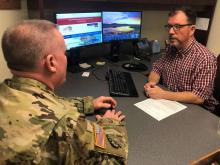New Resource: Community Networks in California’s Federal Funding Account Broadband Grant Program
When California announced in 2021 that it would open a last-mile broadband grant program seeded with $2 billion, it was something of a watershed moment.
The Last-Mile Federal Funding Account (FFA) broadband program,* as it was called, instantly became one of the largest state-administered broadband grant programs ever. Along with other broadband programs overseen by the California Public Utilities Commission (CPUC), the FFA program sought to significantly close the digital divide by ensuring that at least 98 percent of households had broadband access.
Municipalities, cooperatives, Tribal entities and community-based nonprofit networks seized this opportunity to take charge of their digital futures, submitting nearly one hundred applications in more than 40 counties across the state.
As grant announcements began rolling out in June of 2024, the Institute for Local Self-Reliance (ILSR) began tracking where that money was going and, specifically, the kinds of applicants that were successful in the program. What emerged was indisputable: California’s Federal Funding Account broadband program was an unprecedented success for community networks.
At communitynetworks.org, we have published numerous stories highlighting innovative and successful applications, including projects by Plumas-Sierra Telecommunications, the City of Huntington Park, the City of Oakland, Cold Springs Rancheria, and the City of Indio.
Today we are releasing a new two-part dashboard based on the CPUC’s data that helps visualize the success of community-based projects in this transformative state program. (The CPUC also has a very helpful interactive dashboard with more detail on each project, but it does not share our focus on community networks). Hover on each visualization within this dashboard for additional detail.



